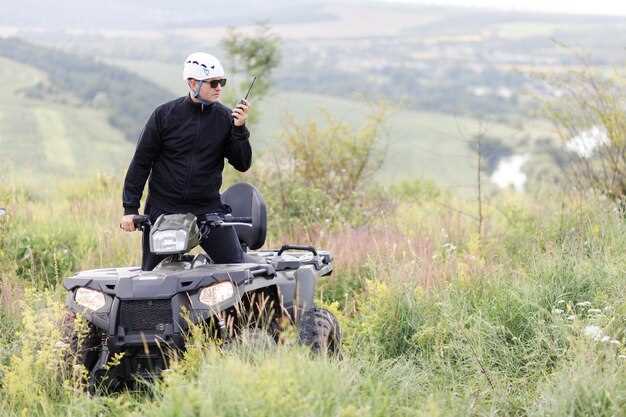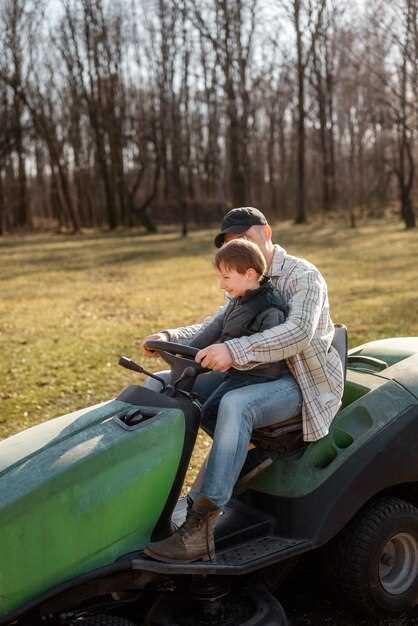
When it comes to mountain trail adventures, having a reliable and well-prepared ATV is crucial for a safe and enjoyable riding experience. The rugged terrain and unpredictable weather conditions found in mountainous areas demand that riders take special care in prepping their vehicles. Ensuring that your ATV is in top condition not only enhances performance but also minimizes the risks associated with off-road riding.
Before setting out on your mountain journey, it is essential to conduct a thorough inspection of your ATV. Start by checking the tire pressure and tread depth, as these factors greatly influence traction on uneven surfaces. Additionally, inspect the brakes, lights, and winch to ensure they function correctly. Taking these precautions will provide you with more confidence as you navigate through the challenging trails.
Furthermore, equipping your ATV with the right accessories can enhance your riding experience. Consider adding a durable skid plate to protect the undercarriage, as well as a winch for emergencies. Packing essential tools and a first aid kit can also make a significant difference in handling unforeseen situations. By taking the time to prep your ATV adequately, you set the stage for an unforgettable mountain riding experience filled with excitement and adventure.
Choosing the Right Tires for Mountain Terrain

Selecting the appropriate tires for your ATV is crucial for a successful mountain trail adventure. The right tires enhance traction, stability, and overall riding experience on rugged terrains. When navigating steep inclines and rocky paths, consider the tire type that best suits your needs.
For mountain terrain, tires with an aggressive tread pattern are essential. These tires offer optimal grip on loose soil, mud, and rocky surfaces. Look for deep lugs and wide spacing between them, as these features help prevent mud buildup and improve self-cleaning capabilities during your ride.
Studded or puncture-resistant tires can be an excellent choice for rocky trails. They provide added durability against sharp stones and branches, ensuring your adventures aren’t cut short by flat tires. Additionally, sidewall protection is a significant factor; reinforced tires help withstand the impact of rugged trails.
Don’t overlook the importance of tire size. Wider tires offer better flotation over soft ground, while narrower tires can improve handling on hard-packed paths. Ensure the tire width and diameter are compatible with your ATV model for optimal performance.
Lastly, consider the weather conditions you may encounter on your mountain adventure. Tires designed for mud may not perform well on icy trails. All-terrain tires offer versatility but may compromise specific traction. Assessing your typical riding conditions will help you choose the best tire option for your mountain trail experiences.
Essential ATV Maintenance Before Trail Riding
Preparing your ATV for trail riding involves essential maintenance tasks that ensure optimal performance and safety during your adventure. Start by checking the engine oil level and changing it if necessary. Fresh oil keeps the engine lubricated and minimizes wear and tear on moving parts.
Next, inspect the air filter for any dirt or debris. A clean air filter promotes better airflow to the engine, enhancing performance and fuel efficiency. Replace it if it appears clogged or excessively dirty.
Examine the coolant level and make sure it’s at the recommended level to prevent overheating during your ride. If the coolant appears murky or discolored, flush the system and replace it with fresh coolant to ensure effective temperature regulation.
Tire condition is crucial for trail riding. Check the tire pressure and look for any signs of damage, such as cracks or punctures. Adequate tread depth is essential for traction on rugged terrain. Inflate or replace tires as needed to optimize handling and safety on the trails.
Inspect the brakes to ensure they are functioning correctly. Check brake fluid levels and look for any leaks in the braking system. Effective brakes are vital for safe maneuvering on steep or uneven terrain while riding.
Don’t forget to check all lights and signals to maintain visibility and communication with fellow riders. Replace any burnt-out bulbs and ensure all electrical components are in good working order before setting off on your trail adventure.
Finally, tighten any loose bolts and nuts, especially those on the suspension and chassis. A thorough once-over of your ATV will help prevent mechanical issues on the trail, allowing you to focus on enjoying the ride.
Navigation Tips and Trail Safety Gear Checklist

Preparing for mountain trail adventures on your ATV requires careful planning, particularly when it comes to navigation and safety. Here are essential tips for ensuring a successful and secure riding experience.
Navigation Tips:
1. Use a GPS device or smartphone app: Invest in a reliable GPS that works offline or download trail apps that provide maps and navigation tools. Familiarize yourself with the area beforehand, marking key waypoints.
2. Study trail maps: Before heading out, obtain and study topographic maps of the trails you’ll be riding. Pay attention to elevation changes, obstacles, and potential hazards.
3. Check trail conditions: Research current trail conditions by checking local forums or contacting riding clubs. Weather can significantly affect trail safety and accessibility.
4. Set waypoints: On longer rides, plan your route and set waypoints to keep track of your progress. This helps avoid getting lost and allows for easier navigation.
Trail Safety Gear Checklist:
– Helmet: Always wear a DOT-approved helmet to protect your head in case of falls.
– Gloves: Durable gloves improve grip and control while protecting your hands from abrasions.
– Goggles: Invest in quality goggles to shield your eyes from dust, debris, and UV rays.
– Protective clothing: Wear sturdy pants, a long-sleeve shirt, and boots that cover your ankles for maximum protection.
– First aid kit: Always carry a well-stocked first aid kit to treat minor injuries on the trail.
– Emergency supplies: Pack a flashlight, multi-tool, fire starter, and extra food and water in case of emergencies.
– Whistle: A whistle is an effective signaling device, making it easier for others to locate you in case of distress.
By diligently preparing your navigation methods and ensuring you have all necessary safety gear, you can enhance your riding experience and stay safe on challenging mountain trails.
 Skip to the content
Skip to the content 